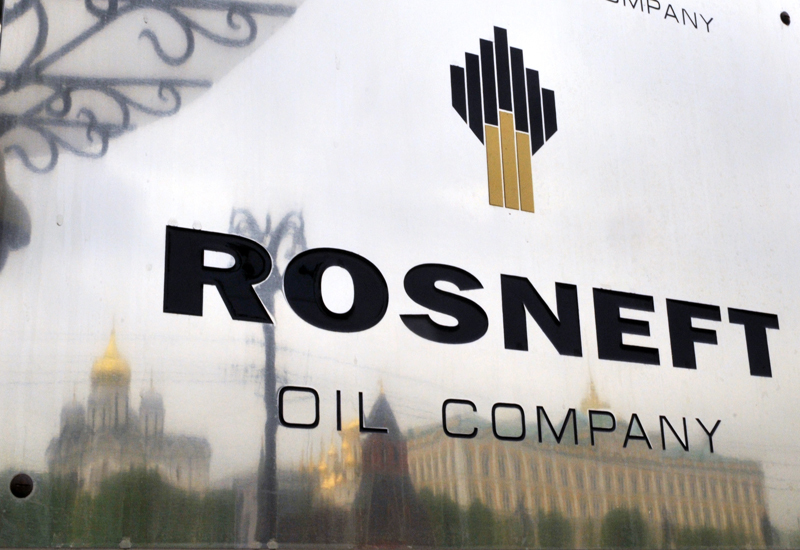
At an oil price of $40 or below, Russian President Vladimir Putin introduced a flat income tax, built a sovereign wealth fund and delivered speeches to the Bundestag in German.
When it was over $100, he fought two wars with neighbors and splashed over $40 billion on a Winter Olympics.
Brent crude at $40 is the key threshold for Russia, so low that institutional reforms become unavoidable but high enough to prevent a financial meltdown, according to a Bloomberg survey of economists. While more than a decade of booming revenue brought a $2.1 trillion energy windfall — and with it prosperity the like of which Russia has never seen — the economy hasn’t grown faster than 5 percent in eight years and has spent the last two in recession. The latest crisis, after oil prices crashed, set the stage for a long-overdue overhaul — or almost did.
“When oil was at $30, there was some commotion, and when it’s near $50, those people who are making decisions calm down,” said Evgeny Gontmakher, chief economist at the Institute of Contemporary Development, whose board of trustees is headed by Prime Minister Dmitry Medvedev. “Starting real reforms is a risky business.”
While oil has partly recovered from the crash earlier this year, it’s traded between about $44 and $51 a barrel since early May. Analysts including BNP Paribas SA and JBC Energy GmbH warned prices may sink toward $40, due in part to seasonal demand weakness. Russia, which based this year’s budget on the price of $50 a barrel, needs oil at $82 to balance its budget, according to Finance Minister Anton Siluanov.
“ Oil prices strengthening to current levels is good news and the question is where we go from here,” Tatiana Lysenko, a senior economist at S&P Global Ratings, said by phone.
Government policy has closely tracked the zigzags of the oil price since the Soviet Union began to rely on oil exports in the early 1970s. The boom years fed assertiveness abroad and at home, from the invasion of Afghanistan in 1979 to the the arrest of former Yukos Oil Co. chief Mikhail Khodorkovsky almost a quarter century later.
When markets swooned, decision makers embraced domestic overhauls and opted for a mellower approach overseas, culminating in Mikhail Gorbachev’s perestroika of the mid-1980s and market-friendly policies of the 1990s.
“Whenever oil prices have been low, the government has tended to reform,” said Vladimir Osakovskiy, chief economist for Russia at Bank of America Corp. in Moscow. “With oil prices dipping to 2004 lows, we think that the historical perspective might argue for a shift towards more liberal policy.”
The crisis has so far given little momentum to take such a turn. Russia has moved gingerly, tinkering with economic policy while sidelining calls for a broader overhaul. With public finances under pressure from falling oil prices, the central bank shifted to a free-floating exchange rate in 2014, while the Finance Ministry kept a tight rein on spending. The government also restarted privatization this month with its biggest divestment of a state asset in almost three years.
As oil prices rebounded, the Russian currency appreciated almost 17 percent against the dollar this year after a 20 percent loss in 2015, second only to Brazil’s real worldwide. The ruble traded 0.7 percent stronger at 63.0425 against the dollar as of 2:07 p.m. in Moscow.
“A lot of changes have already happened but no steps forward and no proper reforms so far,” said Yevgeny Nadorshin, chief economist at PF Capital in Moscow.
While a parliamentary election looms this fall, followed by a vote in 2018 to select a president, dithering by political leaders may not be an option for much longer. Absent new growth drivers, even Putin now says the economy will stagnate near zero, a far cry from average gains of 7 percent during his first eight years in the Kremlin.
The International Monetary Fund last week called for improving Russia’s institutional and business environment, stressing in a report that “that structural reforms are indispensable to boost potential growth.”
Russia’s property rights, judicial independence and the burden of government regulation were all rated below the 100th spot among 140 nations in the World Economic Forum’s 2015-2016 Global Competitiveness Report.
While the case for giving the economy a facelift is ever stronger, authorities would rather focus on measures with “tangible fiscal results” and probably stop short of changes in key areas such as the legal system, according to BofA’s Osakovskiy. Former Finance Minister Alexei Kudrin, who’s now leading discussions on a new reform plan as an adviser to Putin, has said that boosting growth to 4 percent in the mid-term is only possible by cutting the state’s role in the economy, increasing the pension age and making the judicial and law-enforcement systems more independent.
“In order to conduct reforms, they first need to come to an agreement which way to go and that can take some time,” said Yaroslav Lissovolik, chief economist at the Eurasian Development Bank. “We can’t rule out that some reforms are even possible before 2018, but not painful reforms.”
Recommended for you
